ART HSINCHU, also known as Hsinchu Art Expo, began in 2018. After hosting the second edition, it was temporarily suspended for two years due to the impact of the pandemic. Finally, in 2022, it made a comeback with its third edition, held at the Ambassador Hotel Hsinchu for a total of three days (VIP preview on 6/10 and public exhibition on 6/11 and 6/12). The expo is organized by Da Yuan Art and includes other exhibition brands such as ART FORMOSA, ART FUTURE, and Kaohsiung Art Expo.
For a budding art expo brand, the unexpected suspension due to the pandemic may have seemed like a missed opportunity to sustain its local popularity. However, according to the Art Director of Hsinchu Art Expo, Mr. Zeng Xueyan, this setback is seen as a chance for a fresh start. From 2018 to 2022, in just five years, the art market structure has undergone generational changes among collectors, and the art market has rapidly progressed and evolved. Art collecting and attending art exhibitions are still relatively new experiences for the audience in Hsinchu.
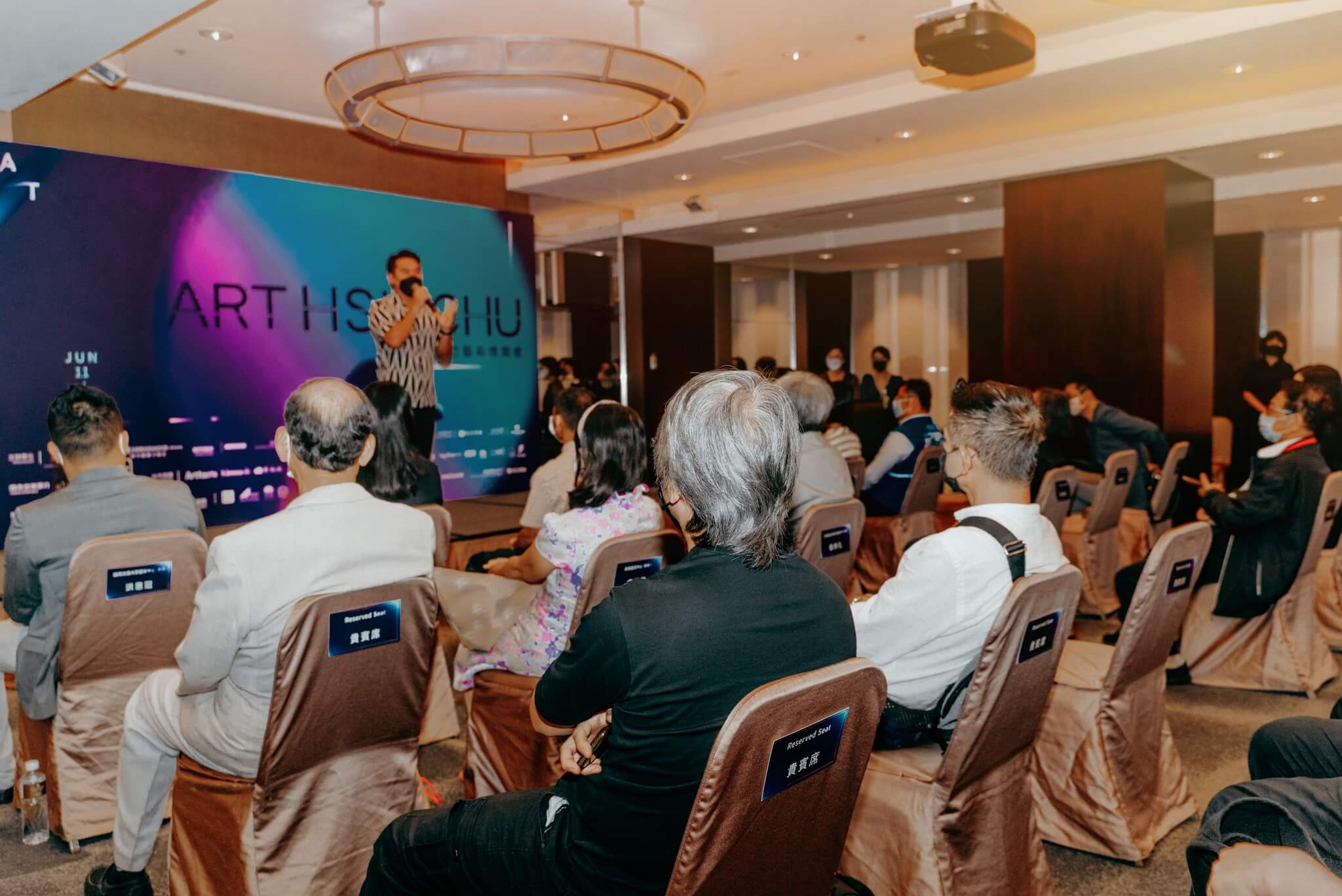 On-site at the Hsinchu Art Expo press conference. Photo provided by Hsinchu Art Expo.
On-site at the Hsinchu Art Expo press conference. Photo provided by Hsinchu Art Expo.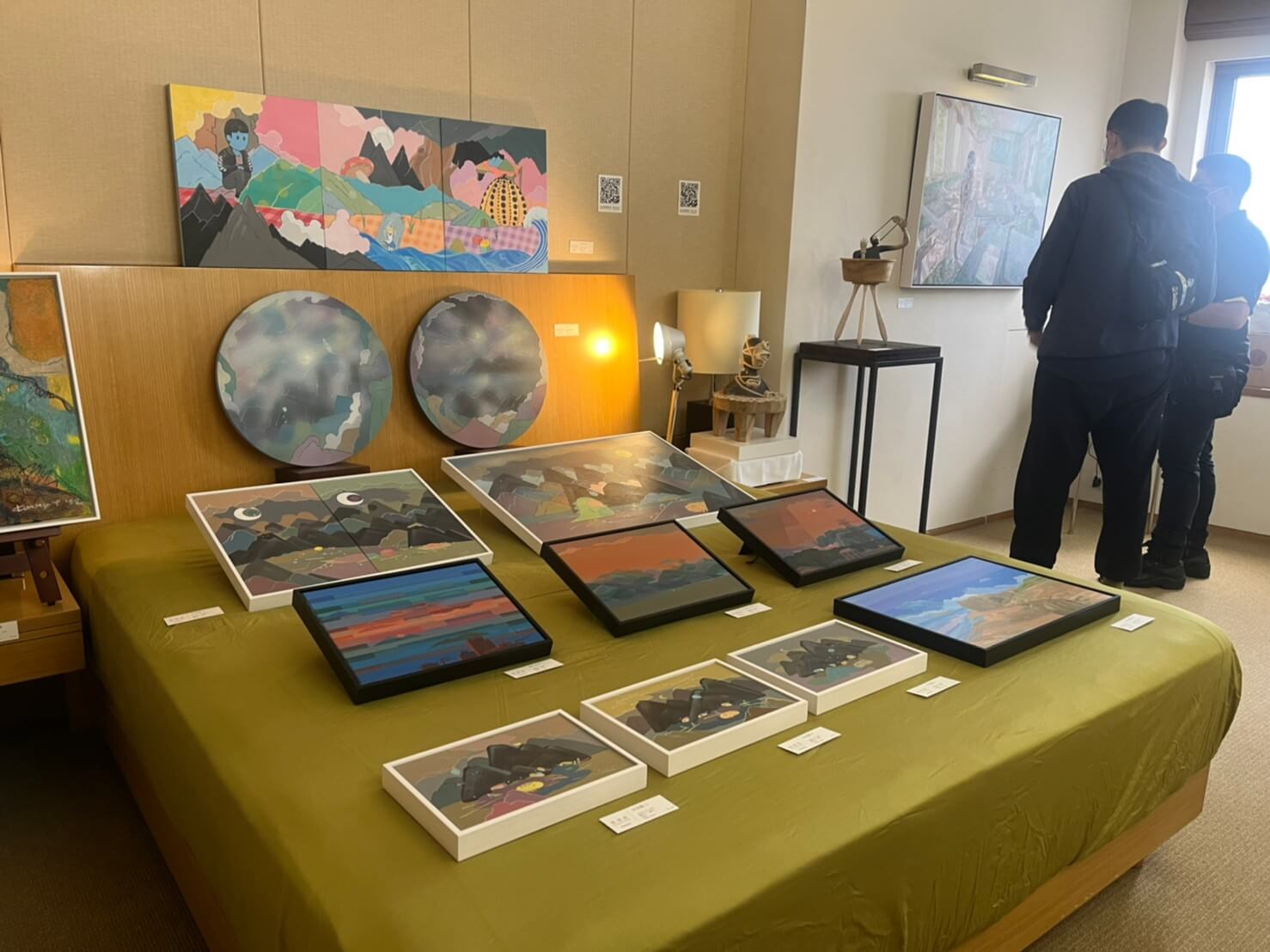 Great Seal Art / GSA Gallery (Booth number 1908) presents works by several artists including Cao Wenrui, Gao Yuquan, Lin Guowei, Zhang Shifei, and Xiao Yimei. (Image/Art Emperor.)
Great Seal Art / GSA Gallery (Booth number 1908) presents works by several artists including Cao Wenrui, Gao Yuquan, Lin Guowei, Zhang Shifei, and Xiao Yimei. (Image/Art Emperor.) Rich Art Gallery (Booth number 1928) presents works by artists including Cai Weicheng, Wang Xiaobo, Bai Tianyu Zhu Ye, and Mo Bai. (Image/Art Emperor.)
Rich Art Gallery (Booth number 1928) presents works by artists including Cai Weicheng, Wang Xiaobo, Bai Tianyu Zhu Ye, and Mo Bai. (Image/Art Emperor.) Ting Ting Art Space (Booth numbers 1923, 1924) showcases the works of artist Yoshihiko Yoshida. (Image/Art Emperor.)
Ting Ting Art Space (Booth numbers 1923, 1924) showcases the works of artist Yoshihiko Yoshida. (Image/Art Emperor.)Richard CHANG, the founder of Formosa Art Fair, also mentioned that in recent years, the economic development of Hsinchu has been steadily growing. Compared to Taipei, Taichung, or Kaohsiung, the number of art galleries in Hsinchu has been increasing. Although it still cannot compete with other regions, the growth of galleries is directly proportional to the purchasing power. As the largest gathering place for Taiwan's technology industry, Hsinchu has many potential art collectors waiting to be developed. The role that Hsinchu Art Expo plays in Taiwan's art industry is an important starting point.
Apart from being the founder of Formosa Art Fair, Richard CHANG also has two exhibition spaces in his own gallery,Galerie Grand Siècle (Booth numbers 1901, 1912). These spaces present artists from different creative dimensions. For example, they showcase the oil paintings of Hsu Kuo-yu (1972-) and the steel artwork of Vietnamese emerging artist Vu Thanh Minh. Another space features Liu Yilan (1966-), known for her strong personal style and self-portrait paintings, as well as Liu Guosong (1932-), hailed as the "Father of Modern Ink Painting." They also bring the silk prints of Japanese abstract artist Kimura Hideki (1948-). Richard CHANG explained that most collectors go through a journey when purchasing artwork, and the positioning of hotel-type art expos is mostly aimed at "facilitating entry into art collecting." Therefore, when considering the presentation of the exhibition, they tend to focus on diverse artistic mediums and artists. This provides options that are accessible for new collectors in terms of pricing while also serving established collectors who already have their own collecting context.
 Artworks by artist Hsu Kuo-yu at the Galerie Grand Siècle exhibition space (Booth numbers 1901, 1912). (Image/Art Emperor.)
Artworks by artist Hsu Kuo-yu at the Galerie Grand Siècle exhibition space (Booth numbers 1901, 1912). (Image/Art Emperor.)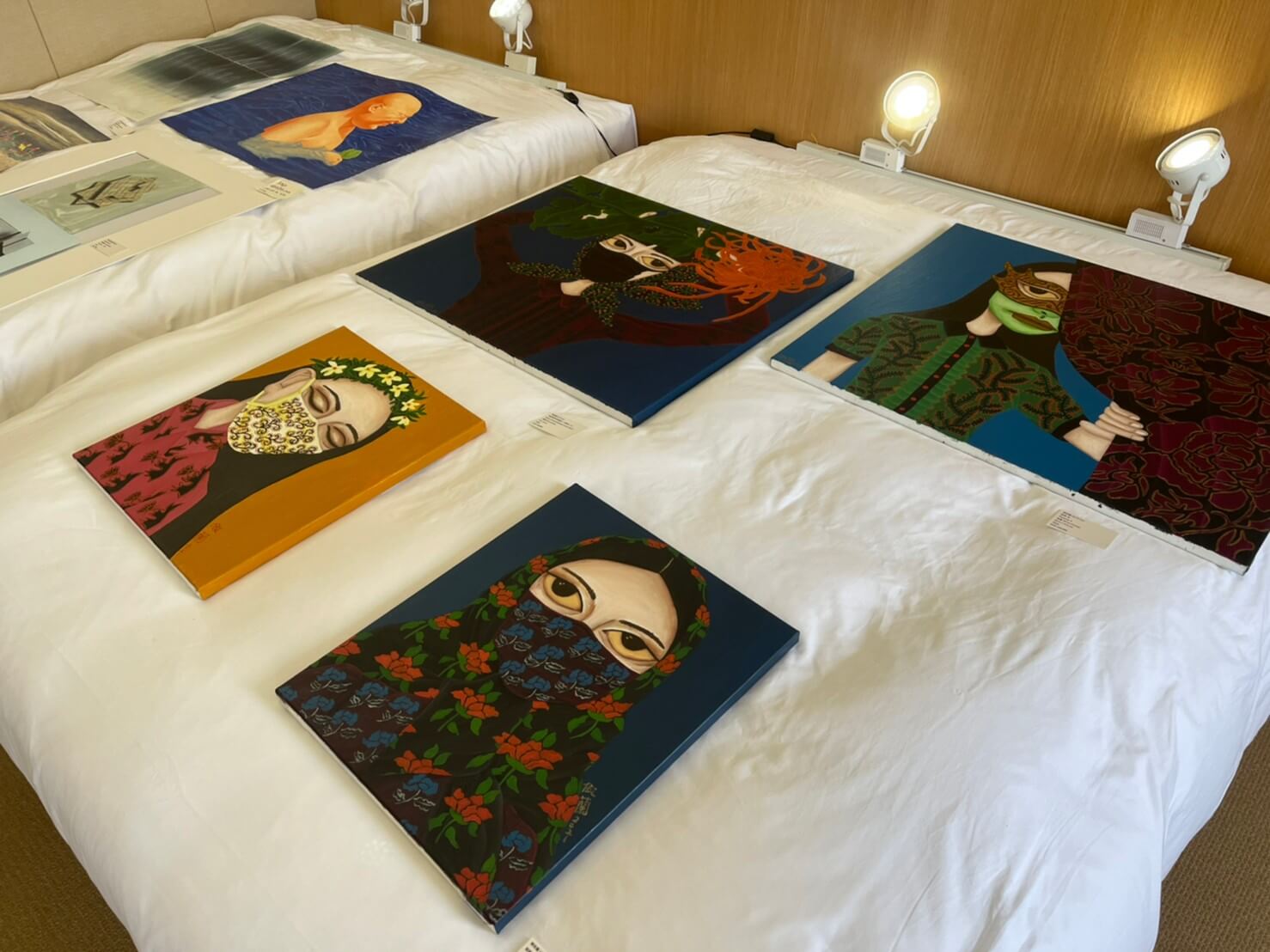 Artworks by artist Liu Yilan at the Galerie Grand Siècle exhibition space (Booth numbers 1901, 1912). (Image/Art Emperor.)
Artworks by artist Liu Yilan at the Galerie Grand Siècle exhibition space (Booth numbers 1901, 1912). (Image/Art Emperor.) Imavision Gallery (Booth numbers 1916 ) (Image/Art Emperor.)
Imavision Gallery (Booth numbers 1916 ) (Image/Art Emperor.)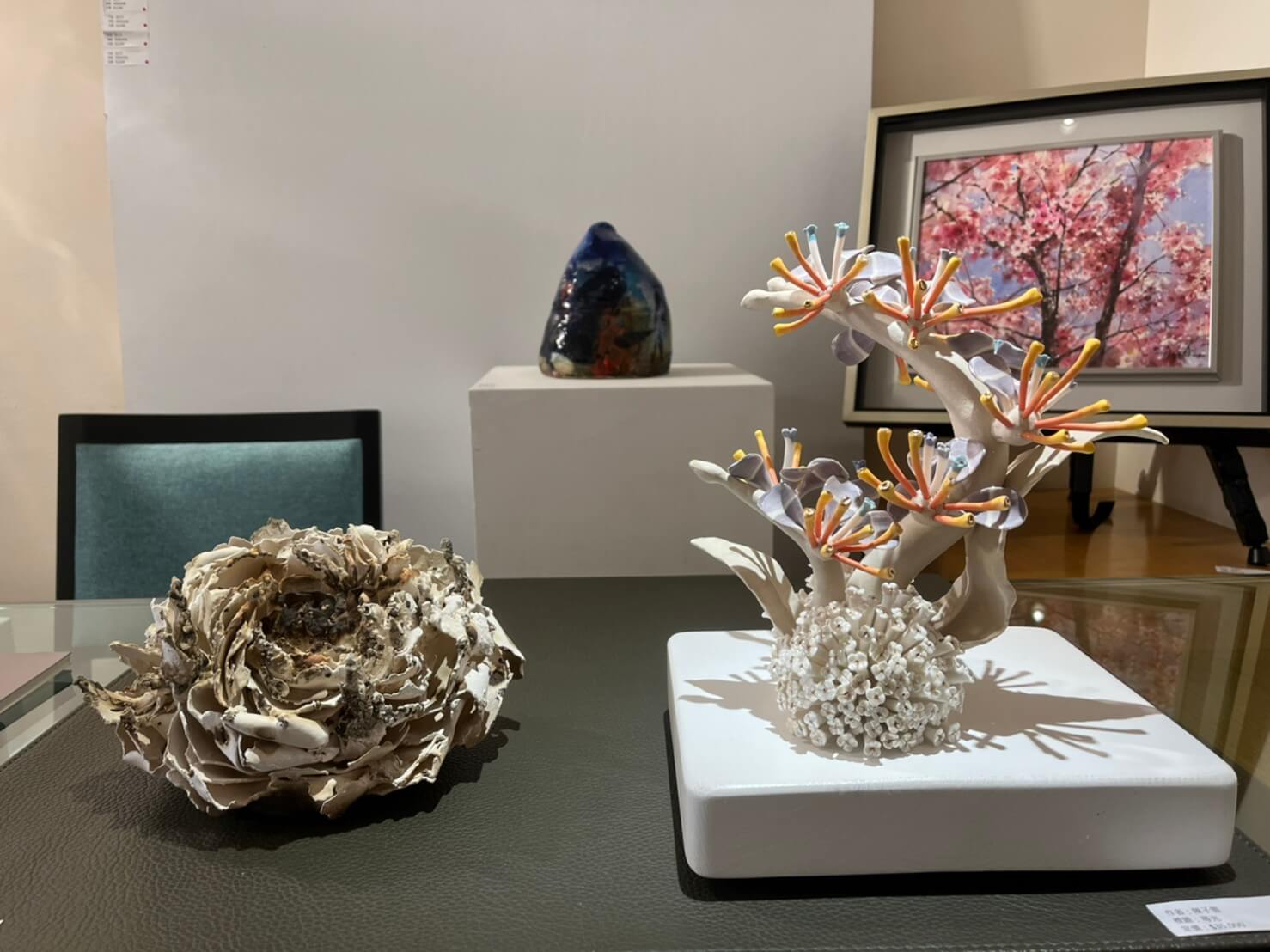 Imavision Gallery (Booth numbers 1916 ) Left: Artwork by Chen Junjie. Right: Artwork by Chen Ziyun (Image/Art Emperor.)
Imavision Gallery (Booth numbers 1916 ) Left: Artwork by Chen Junjie. Right: Artwork by Chen Ziyun (Image/Art Emperor.)In addition, this exhibition also showcases a variety of print works brought by many galleries, providing the audience with an accessible channel to enter the world of art collecting. Especially at the Julia Gallery (Booth No. 1926), there are print works by artists from different generations, including Zao Wou-Ki (1920-2013), Chu Teh Chun (1920-2014), Yayoi Kusama (1929-), Chen Chi-Mao (1920-2005), Wu Hao (1932-2019), Yang Jiongde (1966-), Pan Rensong (1966-), Su Yu-ting (1984-), and Xu Yixuan.
Julia Gallery can be considered the cradle of realism artists, tirelessly promoting realistic painting. However, in recent art exhibitions, the gallery's curatorial direction has become more diverse and enriched. This thematic exhibition approach not only allows local residents to witness the development and transformation of printmaking in different periods in Taiwan but also aims to familiarize the audience with the gallery's research and promotion of various artistic media.
 Julia Gallery (Booth No. 1926) showcasesRen song Pan's print works. (Image/Art Emperor.)
Julia Gallery (Booth No. 1926) showcasesRen song Pan's print works. (Image/Art Emperor.) Julia Gallery (Booth No. 1926) exhibition scene. Image / Retrieved from Julia Gallery's Facebook fan page.
Julia Gallery (Booth No. 1926) exhibition scene. Image / Retrieved from Julia Gallery's Facebook fan page.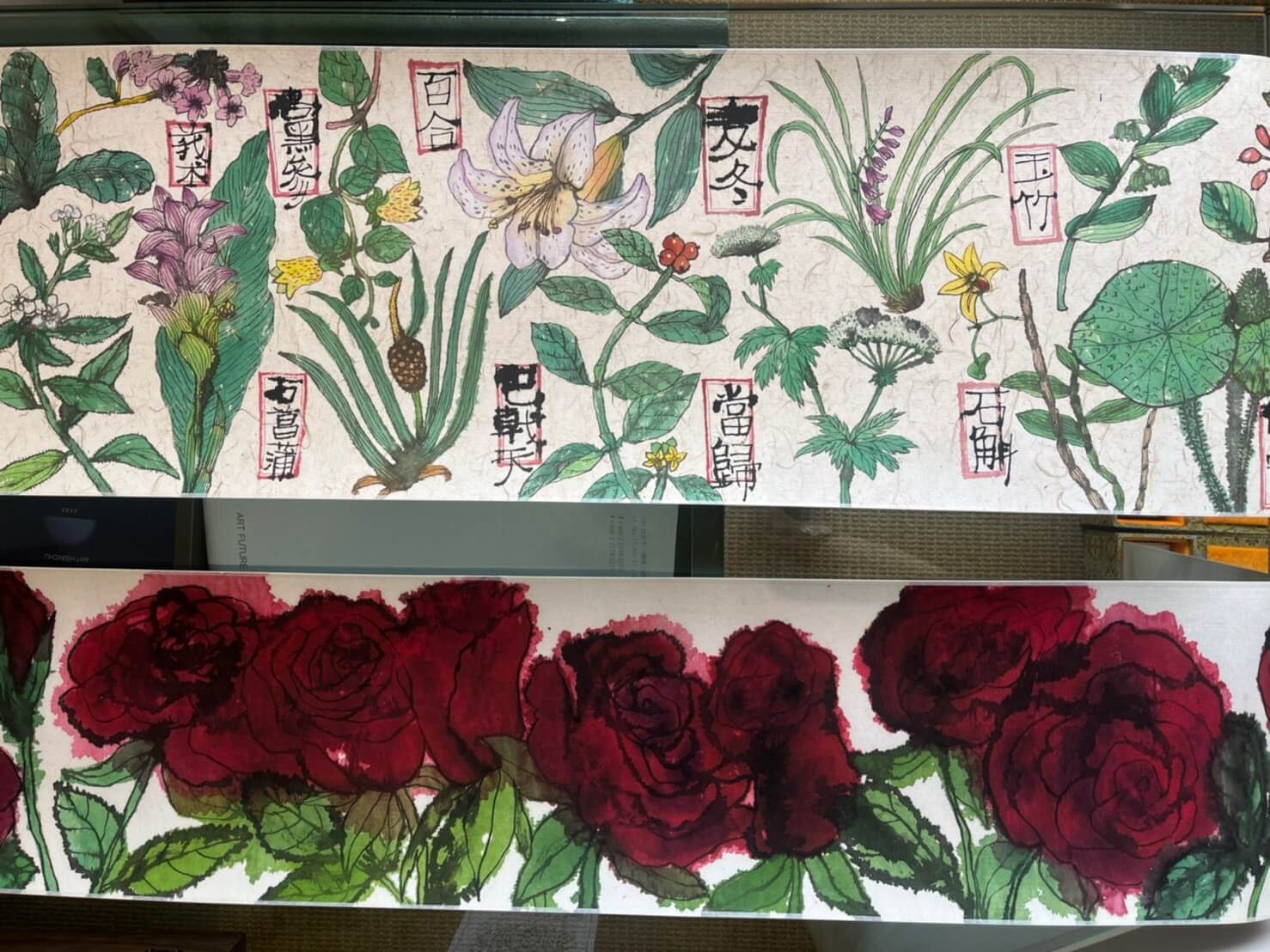 Yuli Art (Booth No. 1905) presents artworks by Zhi mi Li.(Image/Art Emperor.)
Yuli Art (Booth No. 1905) presents artworks by Zhi mi Li.(Image/Art Emperor.) Yuli Art (Booth No. 1905) presents artworks by Zhi mi Li.(Image/Art Emperor.)
Yuli Art (Booth No. 1905) presents artworks by Zhi mi Li.(Image/Art Emperor.) 名典畫廊(展間編號1919)。圖 / 非池中藝術網攝影。
名典畫廊(展間編號1919)。圖 / 非池中藝術網攝影。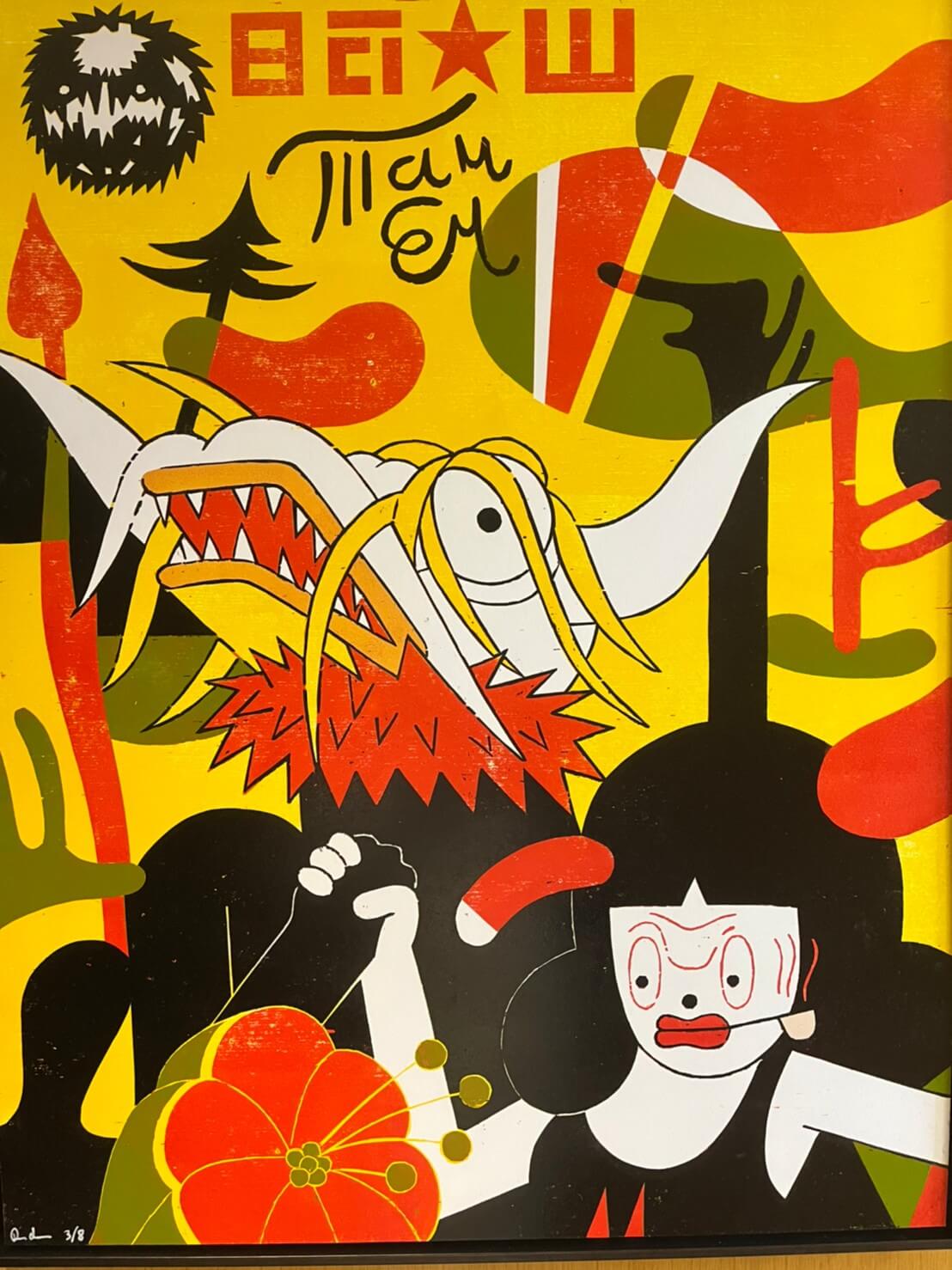 名典畫廊(展間編號1919)展出羅曼・克洛內克(Roman Klonek)作品。圖 / 非池中藝術網攝影。
名典畫廊(展間編號1919)展出羅曼・克洛內克(Roman Klonek)作品。圖 / 非池中藝術網攝影。 新竹市鐵道藝術村展覽現場(展間編號1820)。圖 / 非池中藝術網攝影。
新竹市鐵道藝術村展覽現場(展間編號1820)。圖 / 非池中藝術網攝影。 新竹市鐵道藝術村展覽現場(展間編號1820)。圖 / 非池中藝術網攝影。
新竹市鐵道藝術村展覽現場(展間編號1820)。圖 / 非池中藝術網攝影。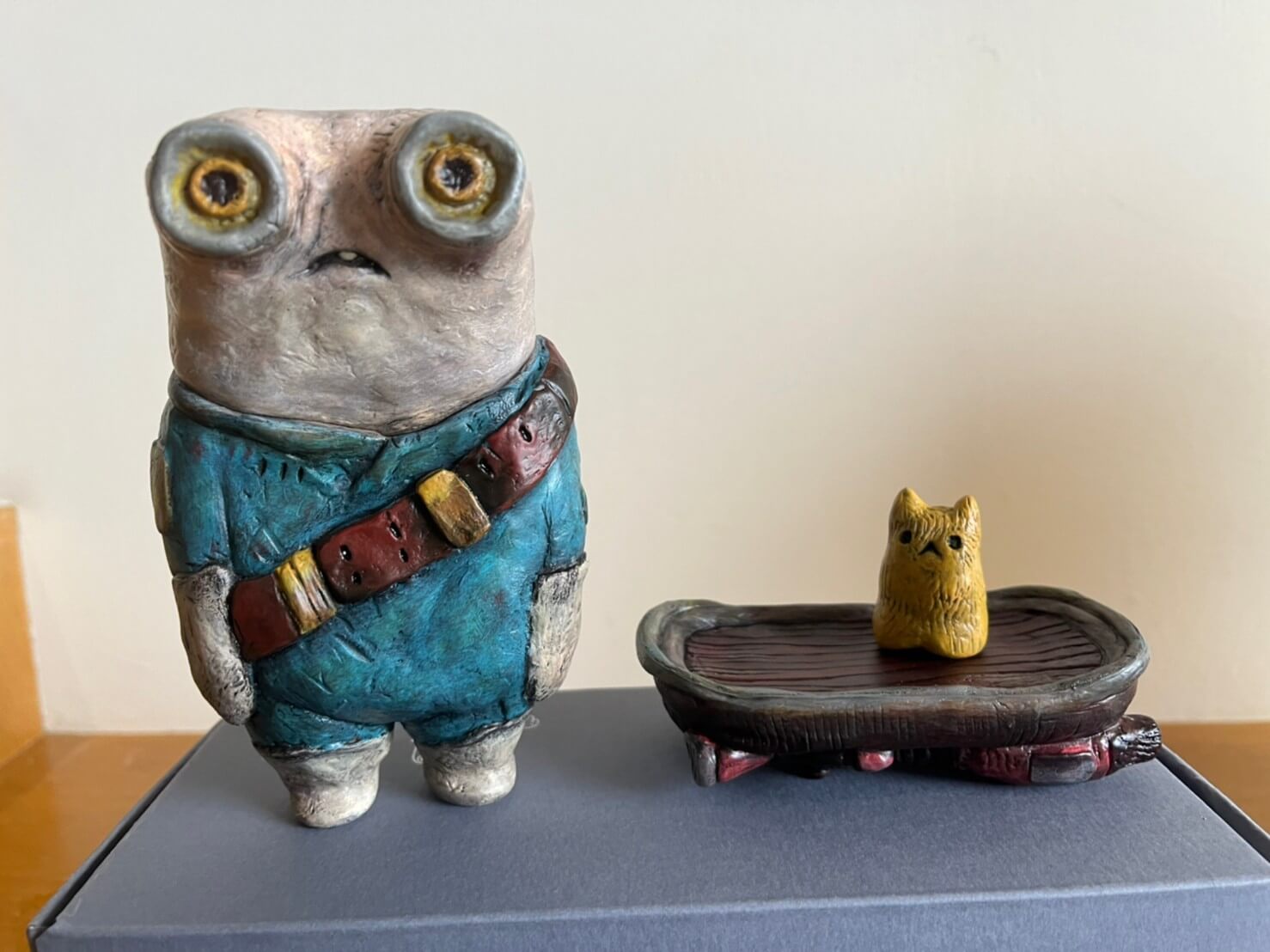 意識畫廊(展間編號1921)展覽現場。圖 / 非池中藝術網攝影。
意識畫廊(展間編號1921)展覽現場。圖 / 非池中藝術網攝影。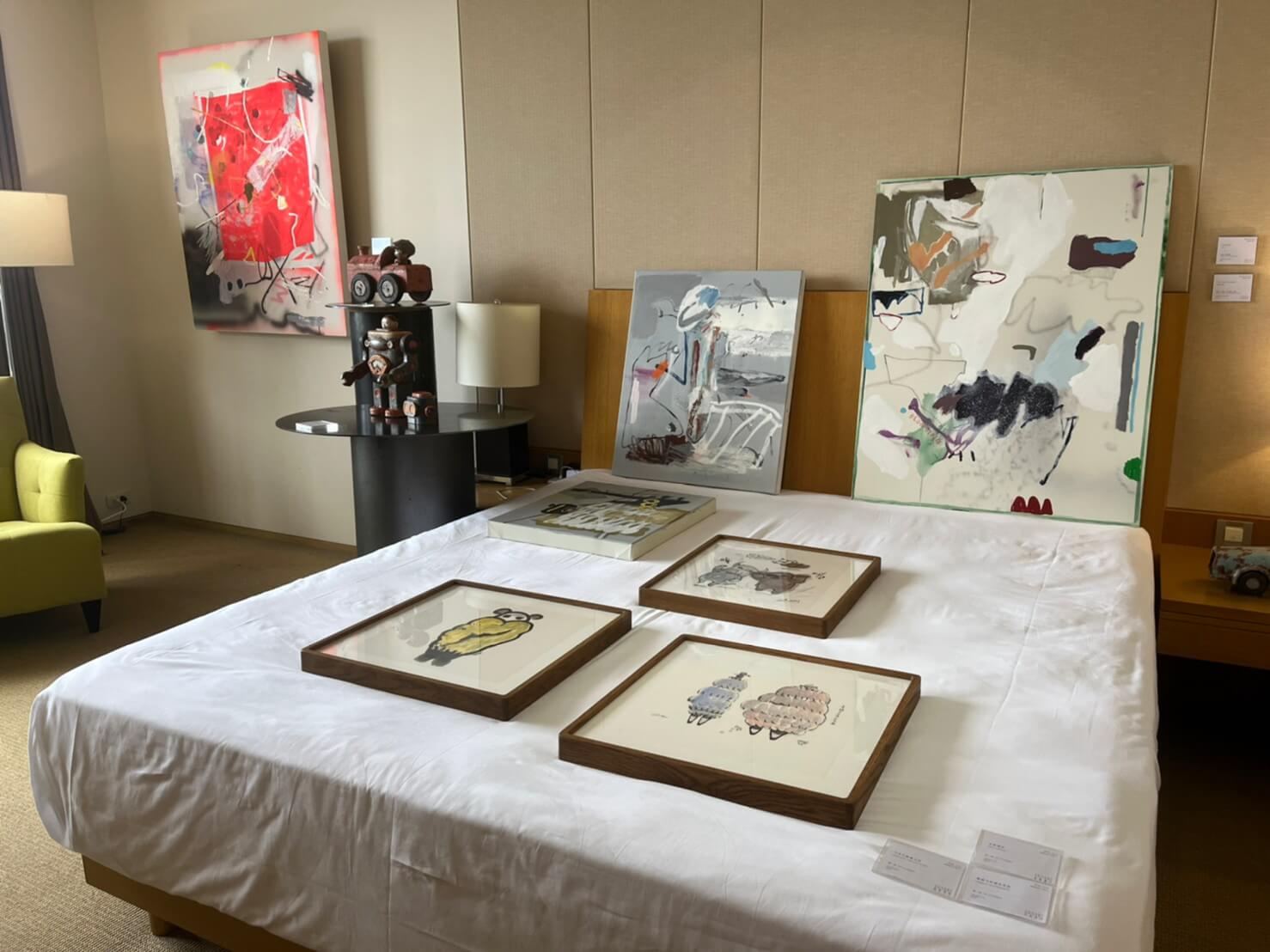 意識畫廊(展間編號1921)展覽現場。圖 / 非池中藝術網攝影。
意識畫廊(展間編號1921)展覽現場。圖 / 非池中藝術網攝影。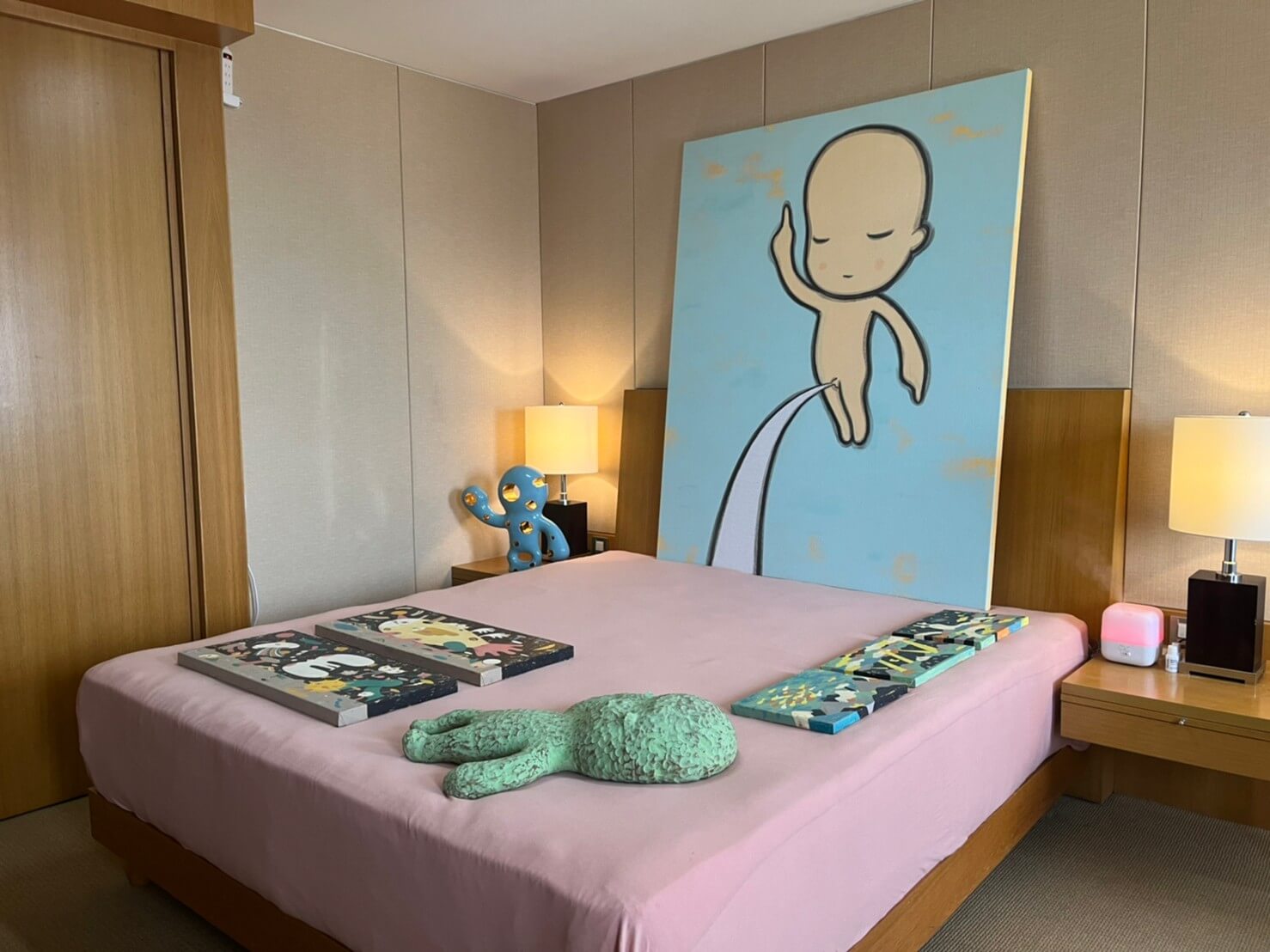 伊日藝術計劃(展間編號1816)展覽現場。圖 / 非池中藝術網攝影。
伊日藝術計劃(展間編號1816)展覽現場。圖 / 非池中藝術網攝影。 Collector & VIP preview 藏家貴賓預展|06. 10
Public Days 公眾展期|06. 11 - 12
Venue 展覽地點|Ambassador Hotel Hsinchu 新竹國賓大飯店18、19樓
・購票連結
・參展畫廊
・線上展廳
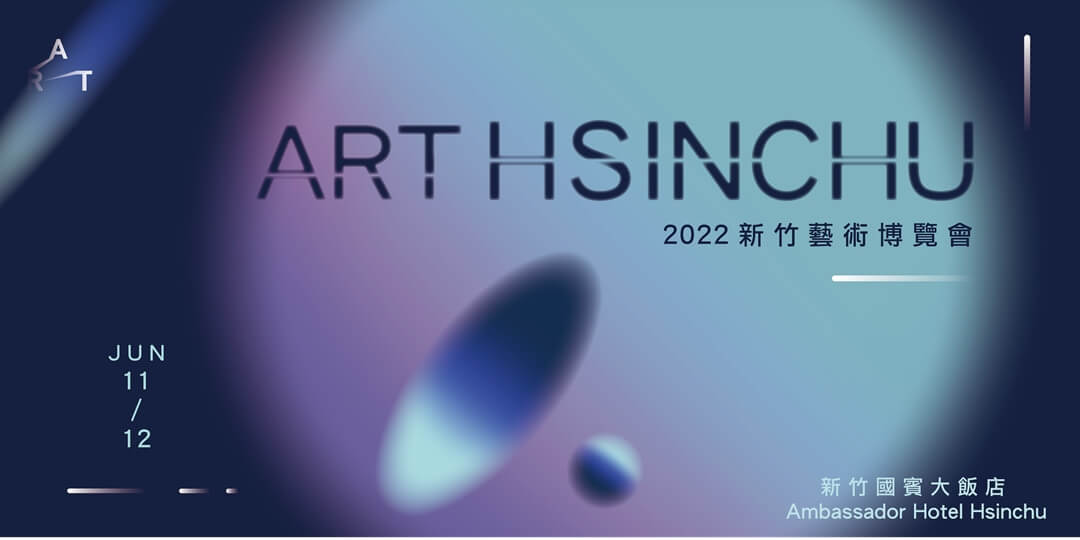 新竹藝博展覽主視覺。圖 / 新竹藝博提供。
新竹藝博展覽主視覺。圖 / 新竹藝博提供。